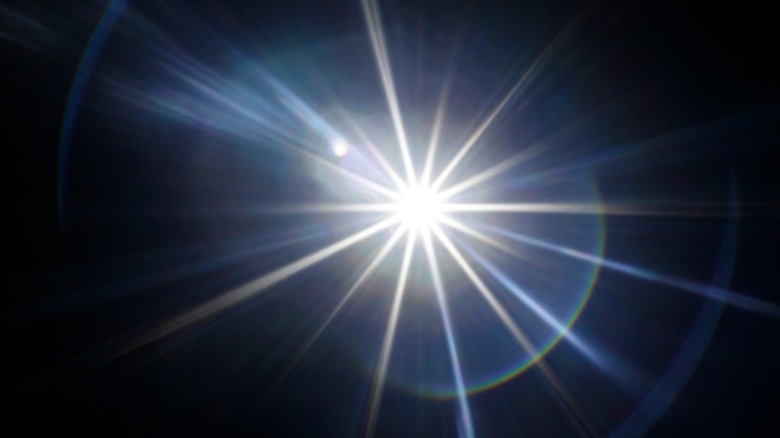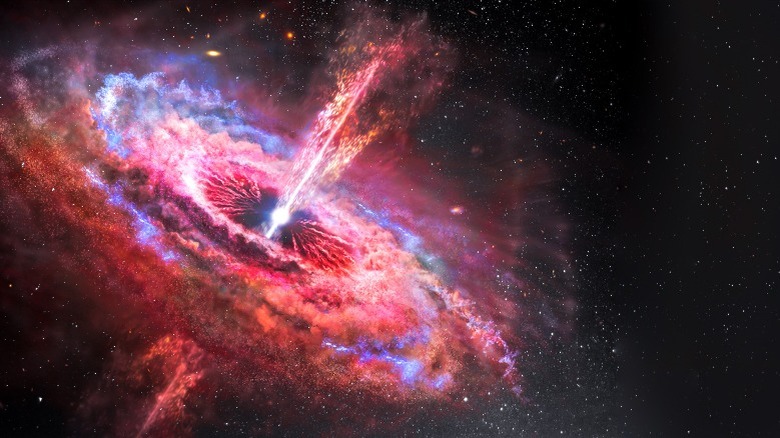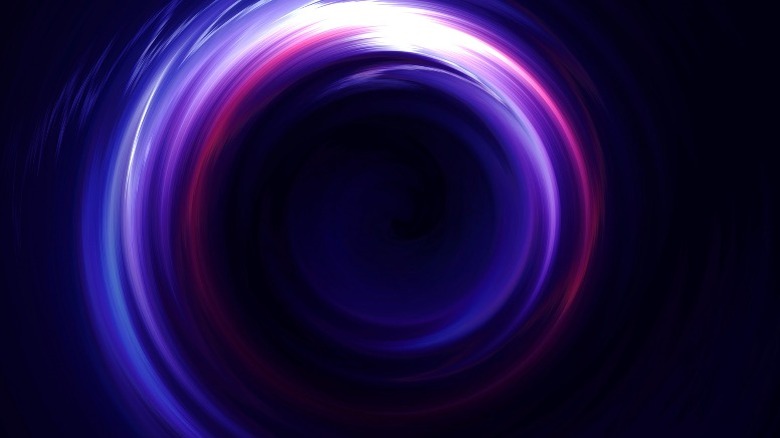What Happens When A Star Passes Too Close To A Black Hole?
Once every 100,000 years or so, an event will occur in a galaxy that results in a star being instantly destroyed by one of the universe's most powerful forces. What natural phenomena could exist in the heavens around us that would threaten something as massive as a star? Simple gravity.
Black holes are thought to be formed when the largest stars die, collapsing into themselves. The resulting supernova sends part of the star out into space in a brilliant flash of light, with the remainder of the body combining into a massive and dense hole that owns a gravitational pull so strong not even light can escape from it, according to NASA.
As black holes were once stars, they very likely have objects that orbit around them just as the planets in our solar system orbit around our sun. But should the orbit of any object cross over a certain threshold near the black hole, that object will be drawn forcefully toward the center of it. No object that crosses this threshold, known as the black hole's "event horizon," is safe. Whether it's an asteroid, planet, or star, it will be devoured by this gravitational wonder.
An accidental discovery
Scientists in January 2019 were able to witness a star with an orbit a bit too close to a black hole. While using telescopes to search for supernovas, they observed a bright burst of light in a galaxy over 375 million light-years from Earth. Simultaneously, a NASA TESS satellite was also focusing on this same general area while it was searching for exoplanets (planets outside of our solar system). The TESS satellite was reporting a star getting brighter as it orbited closer and closer to the center of a black hole.
Science News for Students reports that as the star drew closer to the black hole, it began to be sucked inside of it. The incredibly strong amount of gravity tore the star apart, stretching the once-massive solar body into a strand of gas. According to Phenomena, this celestial event is known as "spaghettification," or "the noodle effect." This event will stretch out even the largest stars, using the gravity of the black hole to stretch the body out vertically and then compressing it horizontally. As you might already be thinking, this isn't a process an astronaut would survive. It's estimated that spaghettification would kill a human being in under one second.
After the star is stretched out and part of its gaseous body is spun back out into space, the remainder of the strand loops back around the black hole and crashes into itself. This creates a ring of bright, hot gas that is known as an accretion disc.
It's like watching water circle a bathtub drain
So what happens as this star is undergoing this part of the process? Theoretical astrophysicist Nicholas Stone explained the process in layperson's terms to Science News for Students, saying to think of the accretion disc rotating around the black hole as water circling the drain of a bathtub. The disc is "superheated, interstellar gas. But it still behaves like a fluid," Stone stated. The gases continuously rub together and heat up, exceeding thousands of degrees Celsius. The amount of radiation emitted from this superheating creates light and energy that we've only been able to observe from a safe distance.
Astronomer Thomas Holoien from the Carnegie Observatories in Pasadena, California, said the event released an amount of energy that was more than 30 billion times more than that of our sun. "This was outshining every other star in its galaxy," he noted.
While these only occur every 100,000 years or so per galaxy, astronomers have been able to witness this beautiful destruction more than once, with Popular Mechanics reporting that it has been observed by astronomers 10 times since 1999. As there are well over 100 million galaxies in the universe, it's only a matter of time before observers with the right equipment can see a star destroyed by a black hole again.


